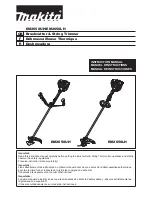Summary of Contents for SPM-32A
Page 1: ...SPM 32A SPM 36A Selective Level Meters Operating Manual BN 4033 00 82 ...
Page 2: ......
Page 16: ...2 Safety information SPM 32A SPM 36A 2 4 Notes ...
Page 118: ...5 10 Ordering information SPM 32A SPM 36A 5 20 ...
Page 122: ......



































